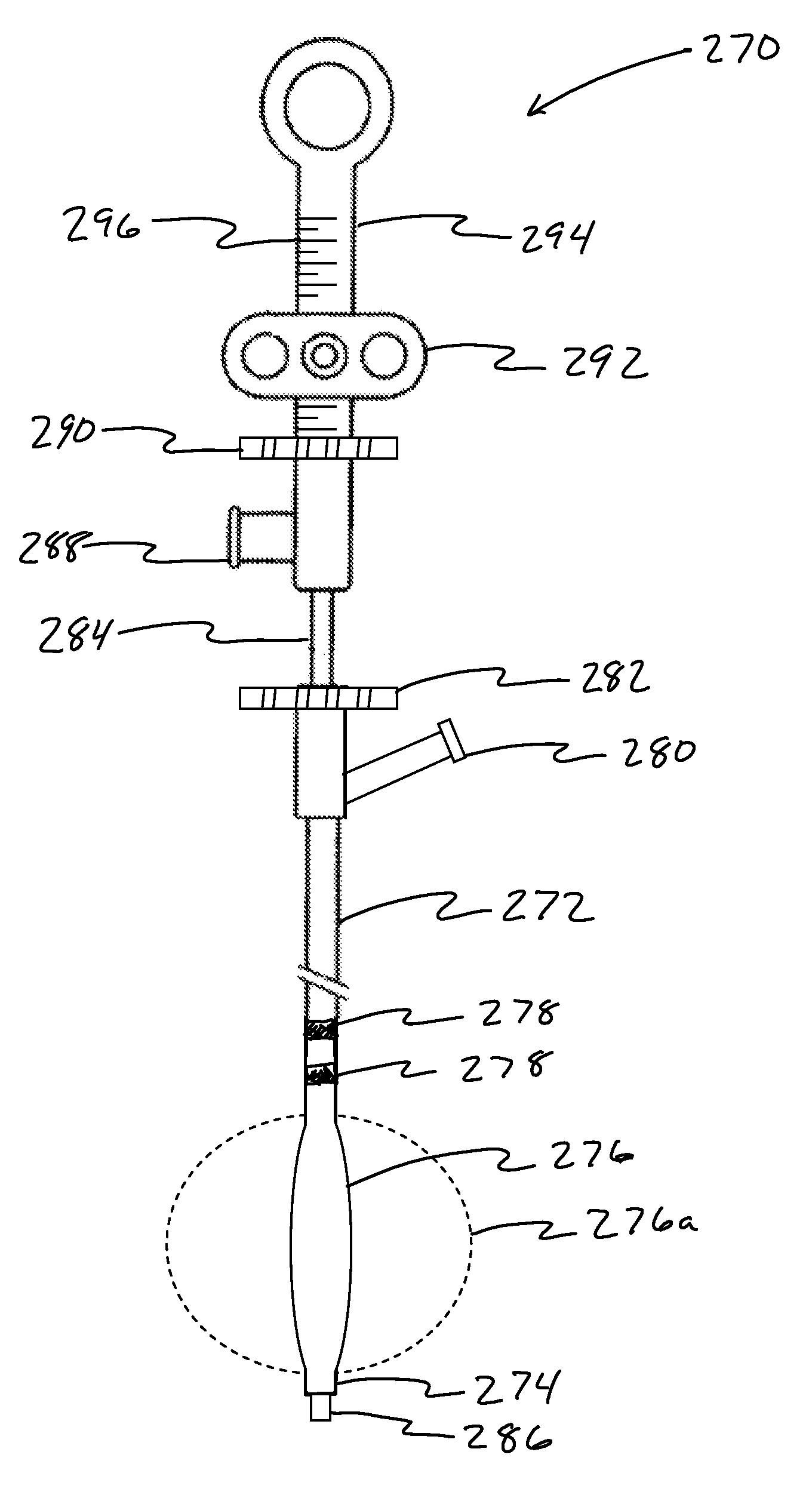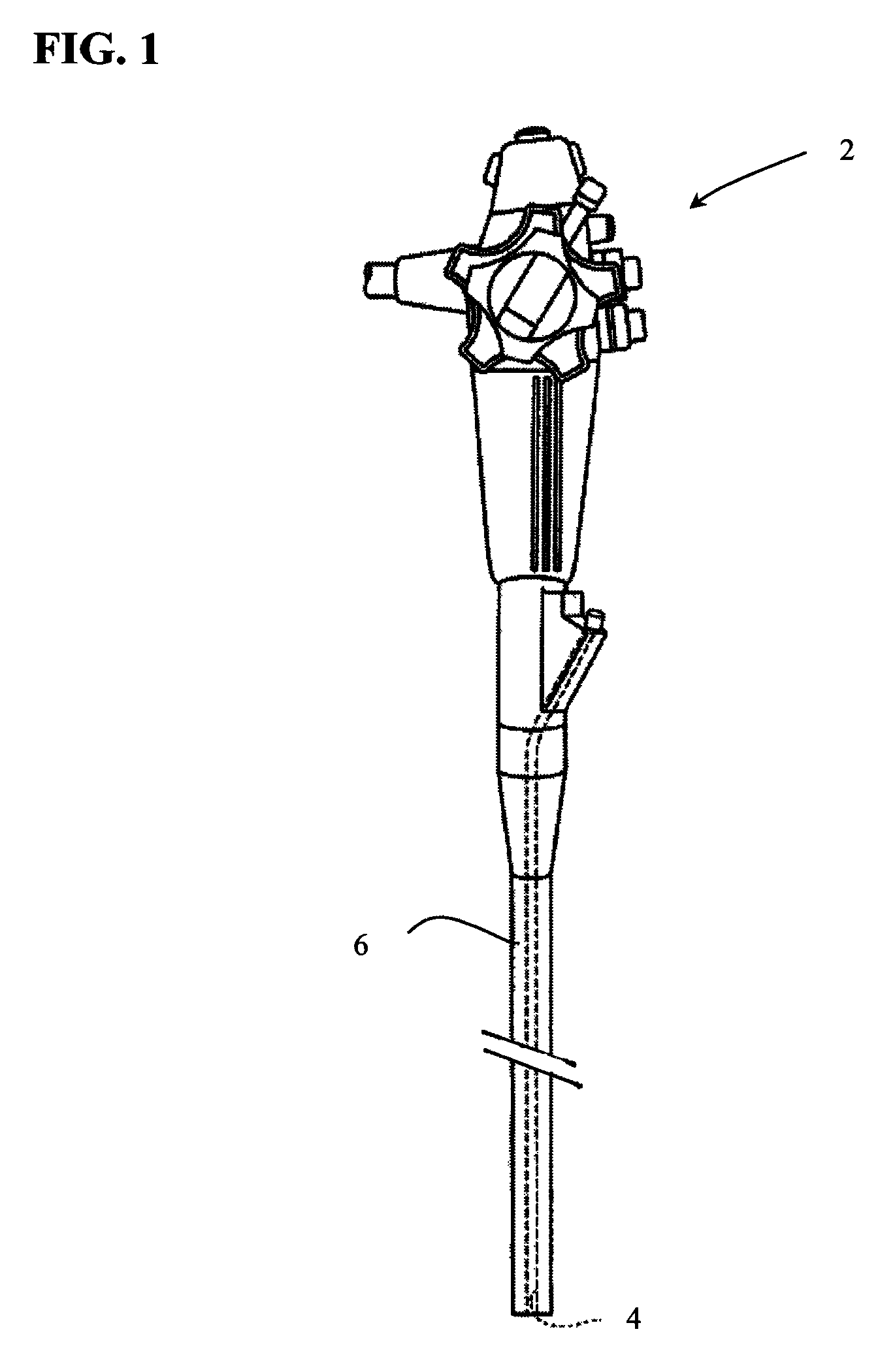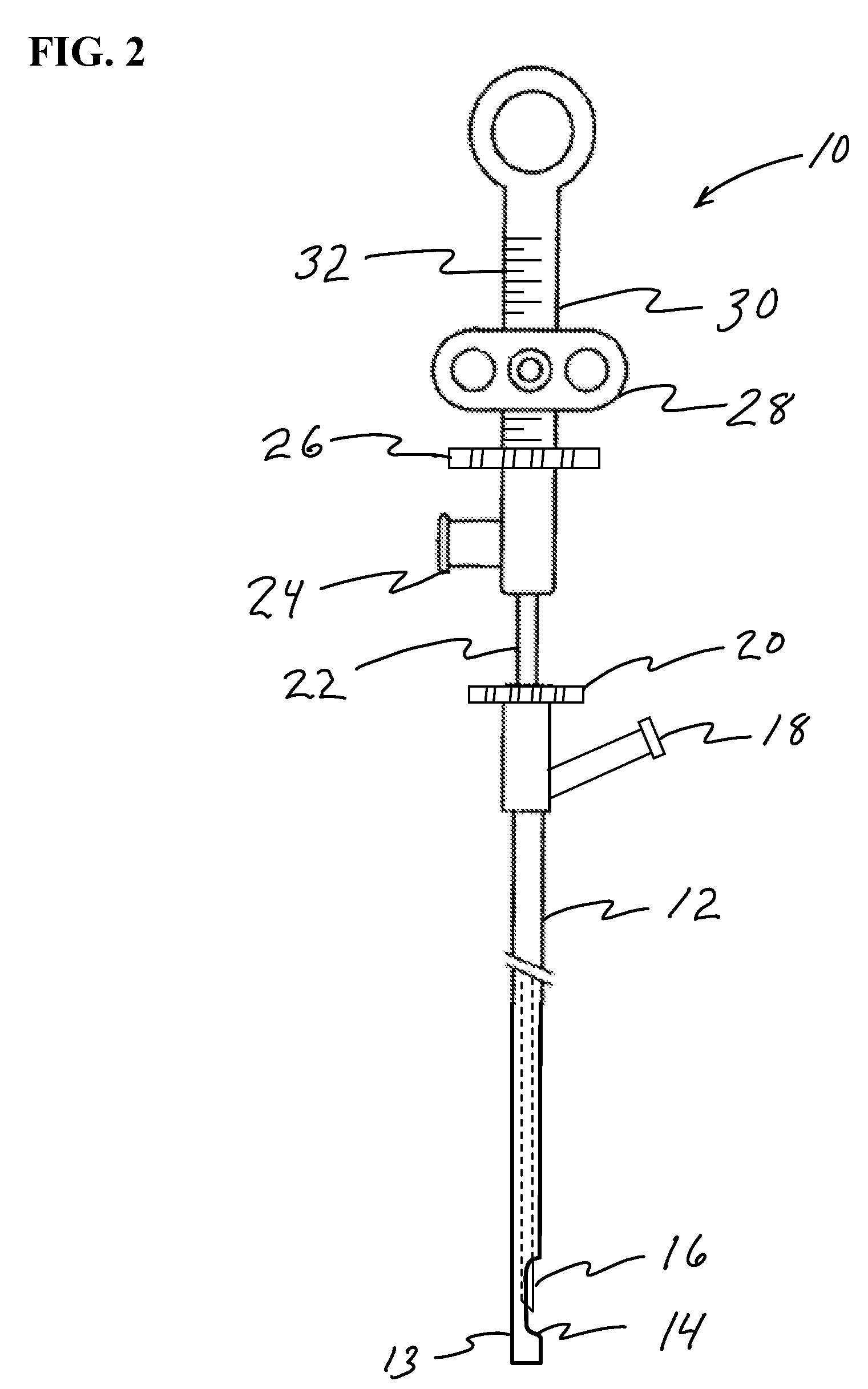Methods and systems for performing submucosal medical procedures
a technology of submucosal and tunneling, applied in the field of safe access needle injection instruments and submucosal tunneling instruments, can solve the problems of en bloc removal of large flat mucosal lesions, numerous problems for current endoscopic tools and techniques, and inability to perform full thickness biopsies
- Summary
- Abstract
- Description
- Claims
- Application Information
AI Technical Summary
Benefits of technology
Problems solved by technology
Method used
Image
Examples
Embodiment Construction
[0083]Methods and devices for performing submucosal medical procedures in a desired area of the digestive tract using an endoscope are described.
[0084]FIG. 1 illustrates an endoscope 2 of the type used in endoscopic procedures and suitable for use with embodiments of the present invention. The endoscope 2 has a working channel 4 extending from a proximal portion of the endoscope to the distal end of the endoscope. The endoscope 2 also has an insertion section 6 which enters the body of a patient passing through a natural orifice such as the mouth or rectum. The insertion section 6 is generally navigated to a position with the digestive tract when performing a submucosal medical procedure. Devices for use in performing submucosal medical procedures are preferably delivered through working channel 4 of the endoscope 2; however devices may be delivered along side the insertion section 6 of the endoscope.
[0085]FIG. 2 illustrates a safe access needle injection instrument 10 which is used...
PUM
 Login to View More
Login to View More Abstract
Description
Claims
Application Information
 Login to View More
Login to View More - R&D
- Intellectual Property
- Life Sciences
- Materials
- Tech Scout
- Unparalleled Data Quality
- Higher Quality Content
- 60% Fewer Hallucinations
Browse by: Latest US Patents, China's latest patents, Technical Efficacy Thesaurus, Application Domain, Technology Topic, Popular Technical Reports.
© 2025 PatSnap. All rights reserved.Legal|Privacy policy|Modern Slavery Act Transparency Statement|Sitemap|About US| Contact US: help@patsnap.com



